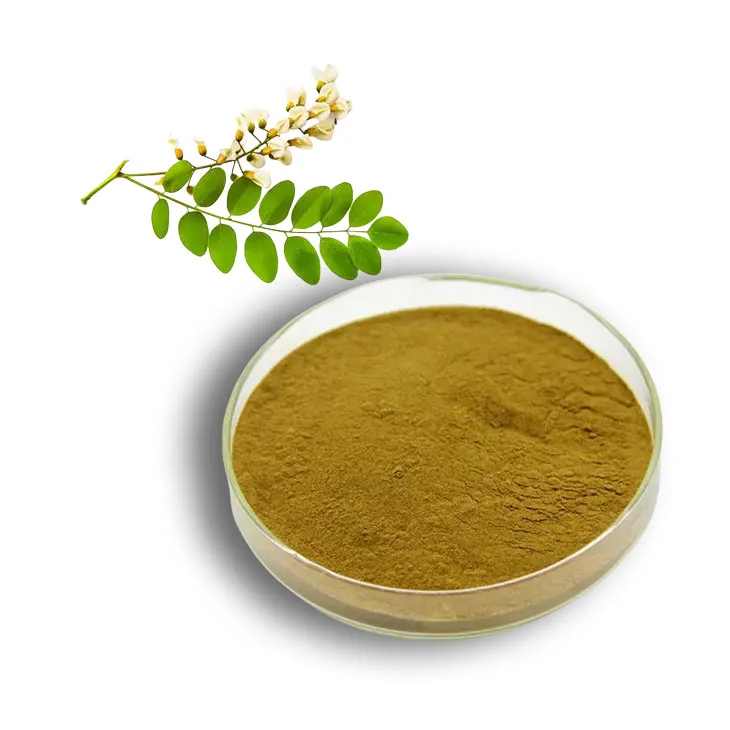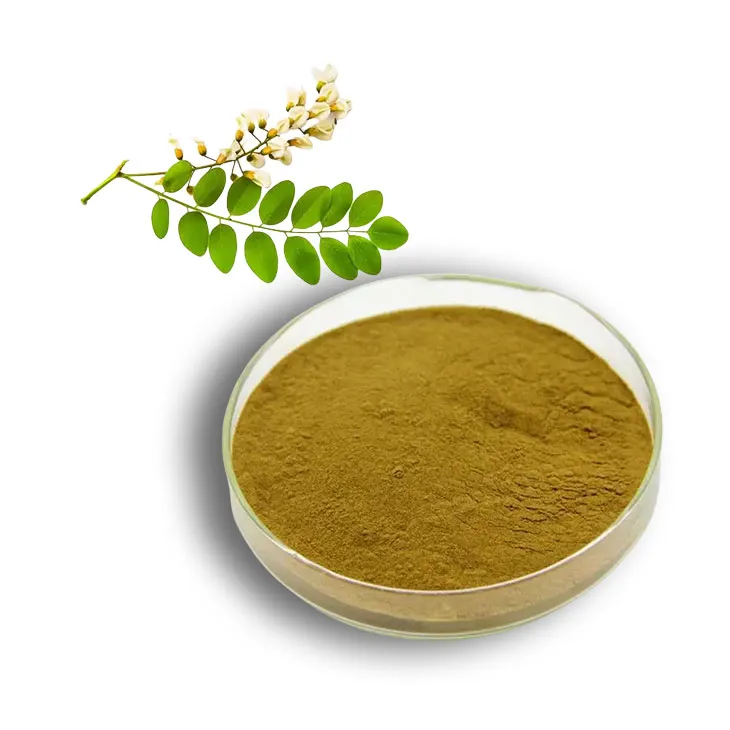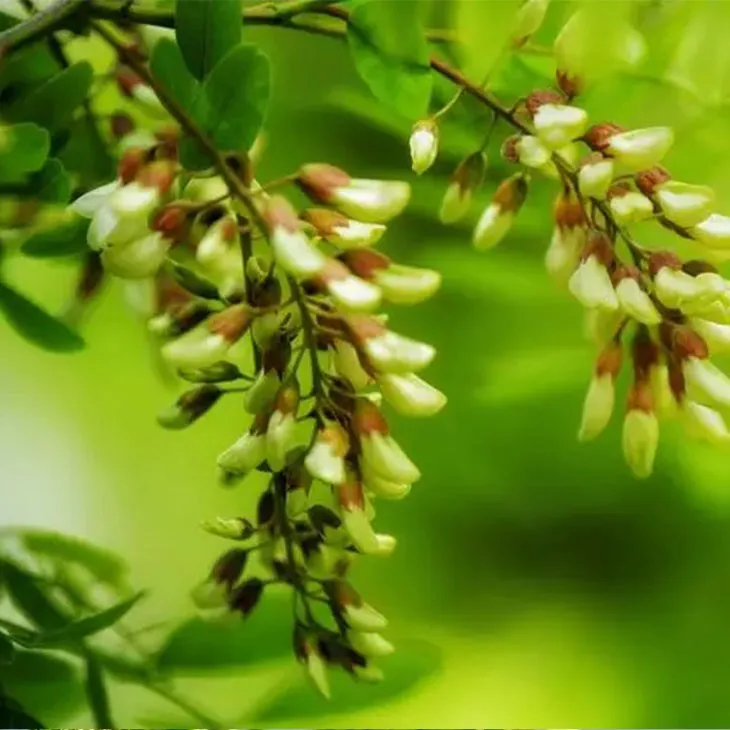- 0086-571-85302990
- sales@greenskybio.com
Sophora japonica flower extract: China vs. the United States.
2024-11-28

1. Introduction
The locust flower, also known as Sophora japonica, has been valued for its potential health benefits and various applications in different industries. The extract of the locust flower contains a variety of bioactive compounds, which has attracted the attention of both the Chinese and American markets. This article aims to compare the locust flower extract in China and the United States in terms of raw material sources, extraction technology innovation, and market development trends.

2. Raw Material Sources
2.1 China
In China, the Sophora japonica is widely distributed. It can be found in many regions, especially in northern and central China. China has a long - standing tradition of using Sophora japonica in traditional Chinese medicine. The large - scale cultivation of Sophora japonica provides a rich source of raw materials for the extraction of locust flower extract.
One of the main advantages in China is the availability of wild and cultivated Sophora japonica. The wild variety, which grows in natural habitats, may have certain unique properties due to its adaptation to the local environment. At the same time, the cultivated Sophora japonica can be managed and harvested more systematically, ensuring a stable supply of raw materials.
Moreover, China's vast territory and diverse climates allow for different growth conditions of Sophora japonica, which may result in variations in the chemical composition of the locust flower, providing a wider range of raw material options for extract production.
2.2 United States
In the United States, the distribution of Sophora japonica is relatively limited compared to China. However, the United States also has its own sources of locust flower. Some regions with suitable climates, such as certain parts of the southern states, may have small - scale cultivation or natural growth of Sophora japonica.
The main source of raw materials in the United States may also include imported Sophora japonica from other countries, including China. This reliance on imports, to some extent, may pose challenges in terms of cost and supply stability. On the other hand, the United States may focus more on quality control and standardization of the imported raw materials to ensure the quality of the locust flower extract.

3. Extraction Technology Innovation
3.1 China
China has been making continuous efforts in the innovation of locust flower extraction technology. Traditional extraction methods in China, such as water extraction and ethanol extraction, have a long history. These methods are relatively simple and cost - effective, and are still widely used in some small - scale production.
In recent years, with the development of modern biotechnology and pharmaceutical technology, China has also introduced more advanced extraction techniques. For example, supercritical fluid extraction (SFE) technology has been gradually applied to the extraction of locust flower extract. Supercritical fluid extraction has the advantages of high extraction efficiency, low solvent residue, and can better preserve the bioactive components of the locust flower.
In addition, Chinese researchers are also exploring the combination of different extraction methods to optimize the extraction process. For instance, combining ultrasonic - assisted extraction with traditional solvent extraction can improve the extraction rate and quality of the locust flower extract.
3.2 United States
The United States is at the forefront of technological innovation in many fields, and the extraction of locust flower extract is no exception. American companies and research institutions often invest a large amount of resources in research and development of extraction technologies.
One of the notable extraction technologies in the United States is the use of enzymatic extraction. Enzymatic extraction can selectively break down the cell walls of the locust flower, facilitating the release of bioactive components. This method is more targeted and can improve the purity of the extract.
Moreover, the United States also pays great attention to the application of high - tech equipment in the extraction process. For example, using advanced chromatography systems for purification and separation of the extract, which can ensure the high quality and consistency of the locust flower extract. However, these advanced technologies also often come with higher costs, which may limit their widespread application in some small - scale production.

4. Market Development Trends
4.1 China
In China, the market for locust flower extract has shown a steady growth trend in recent years. The traditional Chinese medicine industry is one of the main application areas of locust flower extract. With the increasing popularity of traditional Chinese medicine both at home and abroad, the demand for locust flower extract with certain medicinal properties is also rising.
In addition, the cosmetic and food industries in China are also showing great interest in locust flower extract. In the cosmetic industry, locust flower extract is considered to have antioxidant, anti - aging and skin - whitening effects, and is gradually being incorporated into various skin care products. In the food industry, it can be used as a natural additive, adding unique flavors and potential health benefits to food products.
However, the Chinese market also faces some challenges. For example, the lack of unified standards for the quality control of locust flower extract in some areas may lead to differences in product quality. There is also a need for further strengthening of brand building and market promotion to enhance the international competitiveness of Chinese locust flower extract products.
4.2 United States
In the United States, the market for locust flower extract is mainly focused on the health supplement and functional food sectors. American consumers are generally more interested in products with natural ingredients and potential health - promoting effects. Locust flower extract, with its various bioactive components, is seen as a promising ingredient in these areas.
The United States has relatively strict regulations on the production and marketing of health supplements and functional foods. This requires that locust flower extract products meet high - quality and safety standards. Although this may increase the production cost and entry threshold for enterprises, it also helps to build consumer trust and promote the healthy development of the market.
However, compared to China, the United States may have a relatively smaller market scale for locust flower extract, mainly due to the limited availability of raw materials and the relatively high cost of production. To expand the market, American companies may need to further explore new application areas and international cooperation opportunities.
5. Advantages and Challenges
5.1 China
Advantages:
- Rich and diverse raw material sources, including wild and cultivated Sophora japonica.
- Traditional extraction methods with cost - effectiveness, and continuous exploration of advanced extraction technologies.
- A large domestic market with a growing demand in multiple industries such as traditional Chinese medicine, cosmetics, and food.
- Lack of unified quality control standards in some areas.
- Need to strengthen brand building and international market promotion.
5.2 United States
Advantages:
- Advanced extraction technologies and high - tech equipment applications.
- Strict regulatory environment ensuring product quality and safety, which helps build consumer trust.
- Focus on high - value - added markets such as health supplements and functional foods.
- Limited raw material sources, relying on imports to some extent.
6. Conclusion
In conclusion, both China and the United States have their own characteristics and development trends in the field of locust flower extract. China has advantages in raw material sources and market scale, while the United States is leading in extraction technology innovation and regulatory environment. In the future, both countries can learn from each other's experiences, strengthen cooperation in areas such as technology exchange and raw material supply, to jointly promote the development of the locust flower extract industry, and bring more high - quality locust flower extract products to the global market.
FAQ:
1. What are the main differences in raw material sources of Sophora Japonica Flower Extract between China and the United States?
In China, Sophora japonica is widely distributed in many regions. The raw materials may be sourced from both wild and cultivated Sophora japonica trees. China has a long - standing tradition of using Sophora japonica, and there may be large - scale plantations in some areas specifically for extract production. In the United States, while Sophora japonica may also be present, the scale and types of raw material sources might be different. The United States may have different regulations and cultivation practices, which could lead to differences in the quality and quantity of raw materials available for extract production. For example, the climate and soil conditions in different regions of the two countries can influence the growth of Sophora japonica, thereby affecting the characteristics of the raw materials.
2. How do the extraction technologies for Sophora Japonica Flower Extract differ in China and the United States?
In China, traditional extraction methods such as solvent extraction have been widely used for a long time, and with the development of technology, modern techniques like supercritical fluid extraction are also being increasingly explored. Chinese researchers may focus more on optimizing extraction processes based on traditional medicine knowledge and experience to retain the active ingredients effectively. In the United States, there is a strong emphasis on advanced technological innovation. They may use more high - tech equipment and automated processes for extraction. For example, they might utilize more precise separation and purification techniques to obtain a higher - purity extract, which may be more in line with the requirements of modern pharmaceutical and cosmetic industries.
3. What are the market development trends of Sophora Japonica Flower Extract in China?
In China, the market for Sophora japonica flower extract has been growing steadily. It has a wide range of applications in traditional Chinese medicine, health products, and cosmetics. In traditional Chinese medicine, it is used for its various medicinal properties. In the health product market, it is often added to products for promoting health and well - being. In cosmetics, it is valued for its antioxidant and skin - care properties. Moreover, with the increasing awareness of natural products, the demand for Sophora japonica flower extract is expected to continue to rise. There is also a trend towards more standardized production and quality control to meet the regulatory requirements and market competition.
4. What are the market development trends of Sophora japonica flower extract in the United States?
In the United States, the market for Sophora japonica flower extract is mainly focused on the fields of dietary supplements and natural cosmetics. Due to the growing interest in alternative and natural remedies, the demand for Sophora japonica flower extract in the dietary supplement market has been increasing. In the cosmetics industry, it is being explored for its potential as a natural ingredient with beneficial effects on the skin. However, the United States has strict regulatory requirements for these products, which affects the market development. The market also shows a trend towards more research - based product development to prove the safety and efficacy of Sophora japonica flower extract.
5. What are the challenges faced by the development of Sophora japonica flower extract in China?
One of the main challenges in China is quality control. With the expansion of the market, ensuring the consistent quality of Sophora japonica flower extract becomes crucial. There may be issues such as variations in raw material quality due to different growing conditions. Another challenge is the lack of in - depth research on some specific active ingredients and their mechanisms of action compared to international standards. Also, in the international market, there may be challenges in meeting the regulatory requirements of some countries, which may limit the export of Chinese - produced Sophora japonica flower extract.
6. What are the challenges faced by the development of Sophora japonica flower extract in the United States?
In the United States, a significant challenge is the limited availability of local raw materials. Since Sophora japonica may not be as abundantly grown as in China, there may be a reliance on imports, which can be affected by factors such as trade policies and supply - chain disruptions. Another challenge is the competition from other similar natural extracts in the market. With a wide variety of natural products available, it can be difficult for Sophora japonica flower extract to stand out. Additionally, the high cost of research and development, especially for meeting the strict regulatory requirements, can also pose a challenge to its market expansion.
Related literature
- Study on the Extraction Technology of Sophora japonica Flower Extract in China"
- "The Market Prospect of Sophora japonica Flower Extract in the United States"
- "Comparative Analysis of Raw Material Sources for Sophora japonica Flower Extract between China and the United States"
- ▶ Hesperidin
- ▶ Citrus Bioflavonoids
- ▶ Plant Extract
- ▶ lycopene
- ▶ Diosmin
- ▶ Grape seed extract
- ▶ Sea buckthorn Juice Powder
- ▶ Fruit Juice Powder
- ▶ Hops Extract
- ▶ Artichoke Extract
- ▶ Mushroom extract
- ▶ Astaxanthin
- ▶ Green Tea Extract
- ▶ Curcumin
- ▶ Horse Chestnut Extract
- ▶ Other Product
- ▶ Boswellia Serrata Extract
- ▶ Resveratrol
- ▶ Marigold Extract
- ▶ Grape Leaf Extract
- ▶ New Product
- ▶ Aminolevulinic acid
- ▶ Cranberry Extract
- ▶ Red Yeast Rice
- ▶ Red Wine Extract
-
Fenugreek Extract Powder
2024-11-28
-
Beta Carotene
2024-11-28
-
Ivy Extract
2024-11-28
-
Lemon Balm Extract
2024-11-28
-
Marigold Extract
2024-11-28
-
Polygonum Cuspidatum Extract
2024-11-28
-
Okra Extract
2024-11-28
-
Yohimbine Bark Extract
2024-11-28
-
Cactus Extract
2024-11-28
-
Acerola Juice Powder
2024-11-28





















